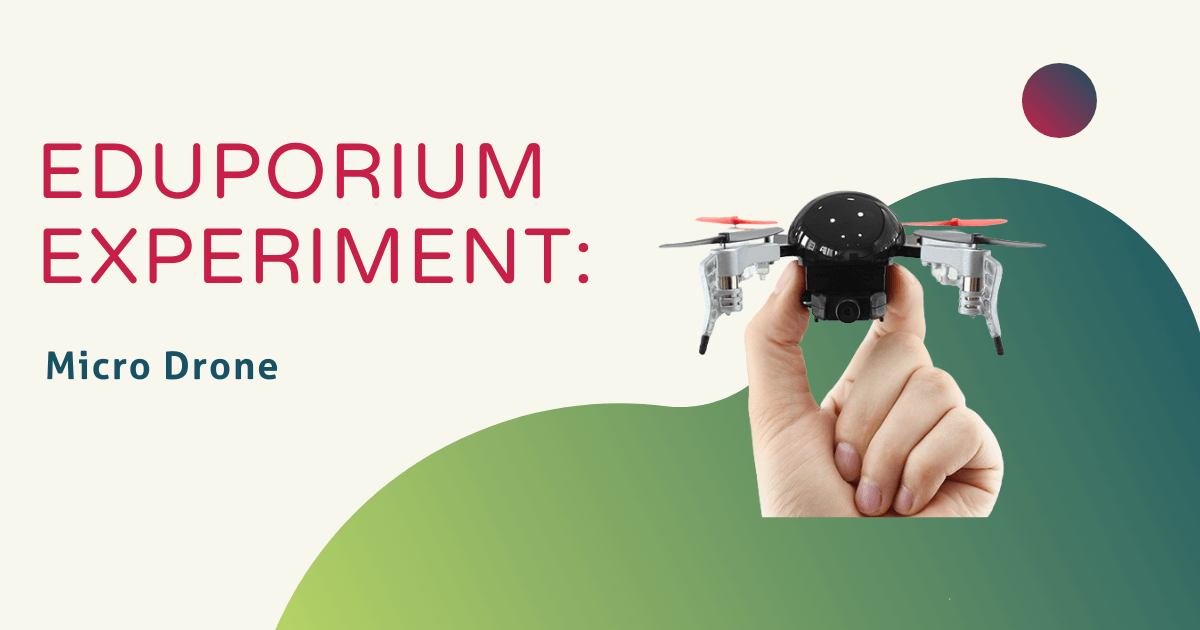As our thoughts turn to spring and the snow begins to melt outside (at least around our offices in Boston), I’m sure you, like me, are starting to plan some fun outdoor activities. The world outside our homes, offices, and classrooms offers boundless learning opportunities and, with the addition of new technology, we can explore even more.
One of the best ways to make use of this new technology? Using it to expand our knowledge of places we couldn’t quite access before. In this case—I’m talking about the sky! As personal drones become more popular, innovators have been working hard on developing new ways to use drone technology. One of the most popular uses for a drone today? A sophisticated, flying camera! That’s just one of the features that the subject of this week’s Eduporium Experiment, the Micro Drone, comes fully equipped with and it's helping to make a push for the use of more drones in education.
The Micro Drone started as an Indiegogo project with a mission to create a small, advanced personal drone that anyone could fly. As the most amateur of amateur drone fliers, I certainly hoped that mission came to fruition! Remembering our past drone experiments, it’s not always easy to fly without crashing. In the Eduporium office, we have the Speed Edition of the Micro Drone 2.0 and, although Extreme Fliers has since released the Micro Drone 3.0, which comes with smartphone-compatible VR technology, the 2.0 still holds up!
Since it’s still a bit too cold to fly outside, I played around with our Micro Drone in our techXplore room. Our kit came with an extra set of propellers, a couple of spare electronic pieces, a controller, and the drone itself. Putting the extras aside, I booted up the controller and turned on the drone with a simple wired connection—the Micro Drone is built to be completely modular and transparent, meaning that users can learn all about the electronics inside and actually see how it works, making it a truly great educational tool!
The Drone itself was pretty easy to control once I got it talking to the controller. The controls are extremely responsive, but not in a finicky way that makes the Drone hard to maneuver. It even comes with speed modes to allow beginner pilots to start off slow—a feature I greatly appreciated! With a little finessing, I was competently piloting around the room without crashing into the ceiling, a new accomplishment for me. I still haven’t managed to stick a smooth landing, but thankfully the Micro Drone is very sturdy and is fully capable of taking a couple hits.
I didn’t get to explore the camera module that our drone came with, but, according to the Extreme Fliers website, this little module is capable of taking stunning HD video and, in the newer models, comes with wireless technology to stream live video right to your phone! That, in my opinion, is very cool. Hopefully we’ll get a new model into the office soon so I can try out those features as well!
Overall, I think that the Micro Drone is a great introduction to drones for kids of any age and any level of experience. With its variable speed settings and compact, sturdy design, it’s a great teaching tool, as well. Students can fully explore its design and parts, and maybe even try their hands at creating their own live-from-the-sky videos! Actually, when it gets a bit warmer outside, I might try that myself.
If you have an idea for a product you’d like to see featured on the Eduporium Experiment, let us know by sending us a message on Facebook or Twitter! To check out some of our other drones, head to our store!



